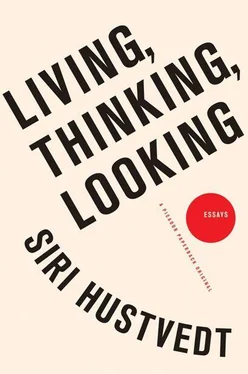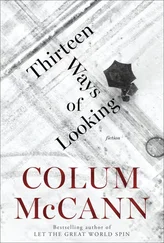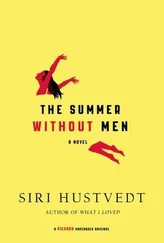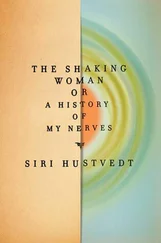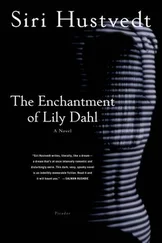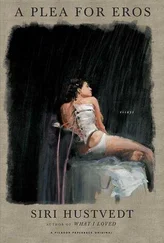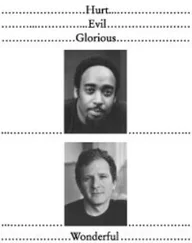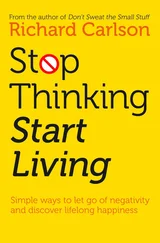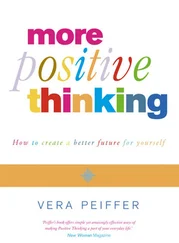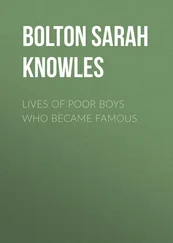My marriage thinking wasn’t all that different from my skiing thinking. I adopted an externalized, rigid, heartless view of both: skiing is supposed to be fun and marriage is an institution of constriction. I didn’t ask myself what I really wanted, because I was in the grip of a received idea, one I had to interrogate and feel for myself before I could discard or embrace it. Unlike Phineas and Elliot, my frontal lobes are intact. I know, however, that the mysteries of my personal neurology are, like everybody else’s, a synthetic combination of my innate genetic temperament and my life experience over time, a thought that takes me back to my mother, a person central to that story. When I told her that I was writing about the advice she gave me years ago, she said, “Well, you know, I couldn’t have said that to just anyone.” Unlike some hackneyed phrase lifted from the pages of a parenting guide, my mother’s sentence was addressed directly to me, and it was given with knowledge, empathy, and love. No doubt, that’s why her words have stayed with me. I felt them.
2007
AMBIGUITY: NOT QUITE ONE THING, not quite the other. Ambiguity resists category. It won’t fit into the pigeonhole, the neat box, the window frame, the encyclopedia. It is a formless object or a feeling that can’t be placed. And there is no diagram for ambiguity, no stable alphabet, no arithmetic. Ambiguity asks: Where is the border between this and that?
There is comfort in saying the word chair and pointing into the room where the chair sits on the floor. There is comfort in seeing the chair and saying the word chair softly to one’s self, as if that were the end of the matter, as if the world and the word have met. Naïve realism. In English, I can add a single letter to word and get world. I put a small l between the r and the d and close the chasm between the two, and the game gives me some satisfaction.
Ambiguity does not obey logic. The logician says, “To tolerate contradiction is to be indifferent to truth.” Those particular philosophers like playing games of true and false. It is either one thing or the other, never both. But ambiguity is inherently contradictory and insoluble, a bewildering truth of fogs and mists and the unrecognizable figure or phantom or memory or dream that can’t be contained or held in my hands or kept because it is always flying away, and I cannot tell what it is or if it is anything at all. I chase it with words even though it won’t be captured, and every once in a while I come close to it.
That feeling of nearness to the shapeless ghost, Ambiguity, is what I want most, what I want to put inside a book, what I want the reader to sense. And because it is at once a thing and a no-thing, the reader will have to find it, not only in what I have written, but also in what I have not written.
2009
MY STRANGE HEAD: Notes on Migraine
1. ARMS AT REST
I AM A MIGRAINEUR. I use the noun with care, because after a lifetime of headaches, I have come to think of migraines as a part of me, not as some force or plague that infects my body. Chronic headaches are my fate, and I have adopted a position of philosophical resignation. I am aware that such a view is resoundingly un-American. Our culture does not encourage anyone to accept adversity. On the contrary, we habitually declare war on the things that afflict us, whether it’s drugs, terrorism, or cancer. Our media fetishizes the heartwarming stories of those who, against all odds, never lose hope and fight their way to triumph over poverty, addiction, disease. The person who lies back and says, “This is my lot. So be it,” is a quitter, a passive, pessimistic, spineless loser who deserves only our contempt. And yet, the very moment I stopped thinking of my condition as “the enemy,” I made a turn and began to get better. I wasn’t cured, wasn’t forever well, but I was better. Metaphors matter.
Although I wasn’t diagnosed with migraine until I was twenty, I can’t remember a time when I didn’t suffer from headaches. A German neurologist, Klaus Podoll, who has studied migraine auras and artists, contacted me a few years ago after he read an interview I had given, in which I mentioned a hallucination that preceded one of my headaches. In an e-mail conversation, he questioned me carefully about my history and concluded that the annual bouts of what my mother and I thought were stomach flu were probably migraine attacks. I have come to agree with him. My “flu” was always accompanied by a severe headache and violent vomiting. It didn’t occur during the flu season, and the sickness always followed exactly the same course. Two days of pain and nausea that lightened on the third day. Throughout my childhood, the attacks came with ritual regularity. In high school, I didn’t have as many “flus,” but after I returned from an intensely exciting semester abroad, spent mostly in Thailand, during my third year of college, I fell ill with what I thought was yet another flu, a siege of excruciating head pain and retching that lasted six days. On the seventh day, the pain lifted somewhat, but it didn’t go away. It didn’t go away for a year. It was better, it was worse, but my head always hurt and I was always nauseated. I refused to give in to it . Like a dutiful automaton, I studied, wrote, received the desired As, and suffered alone until I went to my family doctor, sobbed in his arms, and was diagnosed with migraine.
My young adulthood was punctuated by the headaches with their auras and abdominal symptoms, nervous storms that came and went. And then, after I married the man I was deeply in love with when I was twenty-seven, I went to Paris on my honeymoon and fell sick again. It began with a seizure: my left arm suddenly shot up into the air, and I was thrown back against the wall in an art gallery I was visiting. The seizure was momentary. The headache that followed went on and on for month after month. This time I searched for a cure. I was determined to battle my symptoms. I visited neurologist after neurologist, took innumerable drugs: Cafergot, Inderal, Mellaril, Tofranil, Elavil, and others I’ve forgotten. Nothing helped. My last neurologist, known as the Headache Czar of New York City, hospitalized me and prescribed Thorazine, a powerful antipsychotic. After eight days of stuporous sedation and an ongoing headache, I checked myself out. Panicked and desperate, I began to think that I would never be well. As a last resort, the Czar sent incurables like me to a biofeedback man. Dr. E. hooked me up to a machine via electrodes and taught me how to relax. The technique was simple. The more tense I was, the louder and faster the machine beeped. As I relaxed, the sounds grew slower until they finally stopped. For eight months, I went for a weekly visit and practiced letting go. Every day I practiced at home without the machine. I learned how to warm my cold hands and feet, to increase my circulation, to dampen the pain. I learned to stop fighting.
Migraine remains a poorly understood illness. Although new techniques, such as neuroimaging, have helped isolate some of the neural circuits involved, brain pictures won’t provide a solution. The syndrome is too various, too complex, too mixed up with external stimuli and the personality of the sufferer — aspects of migraine that can’t be seen on fMRI or PET scans with their colored highlights. I have come to understand that my headaches are cyclical and that they play a part in my emotional economy. As a child, life with my peers in school was always hard for me, and my yearly purges no doubt served a purpose. For two days a year, I suffered a cathartic dissolution, during which I was able to stay home and be close to my mother. But times of great happiness can also send me over the edge — the adventure in Thailand and falling in love and getting married. Both were followed by a collapse into pain, as if joy had strained my body to its breaking point. The migraine then became self-perpetuating. I am convinced that a state of fear, anxiety, and a continual readiness to do combat with the monster headache pushed my central nervous system into a state of continual alarm, which could only be stopped by a deep rest. I continue to cycle. Periods of obsessive and highly productive writing and reading that give me immense pleasure are often followed by a neurological crash — a headache. My swings from high to low resemble the rhythms of manic depression, or bipolar disorder, except that I fall into migraine, not depression, and my manias are less extreme than those of people who suffer from the psychiatric illness. The truth is that separating neurological from psychiatric problems is often artificial, as is the old and stubborn distinction between psyche and soma. All human states, including anger, fear, sadness, and joy, are of the body. They have neurobiological correlates, as researchers in the field would say. What we often think of as purely psychological, how we regard an illness, for example, is important. Our thoughts, attitudes, even our metaphors create physiological changes in us, which in the case of headaches can mean the difference between misery and managing. Research has shown that psychotherapy can create therapeutic brain changes, an increase of activity in the prefrontal cortex. Yes, just talking and listening can make you better.
Читать дальше
